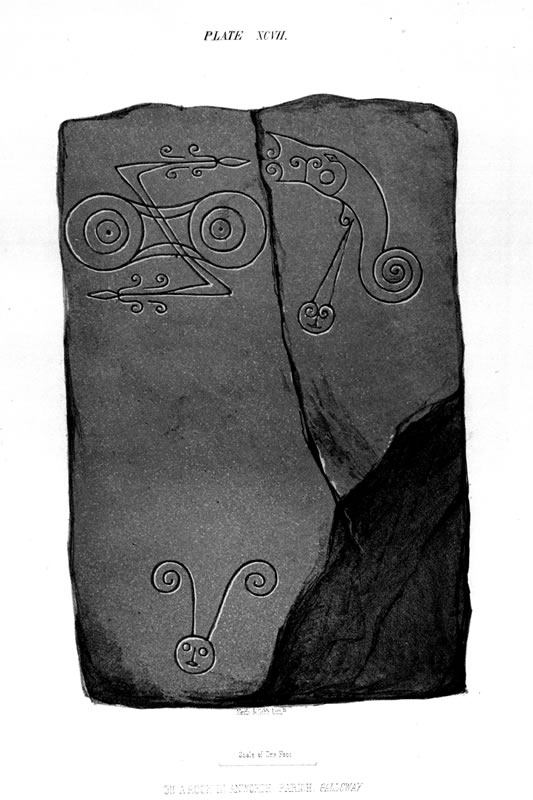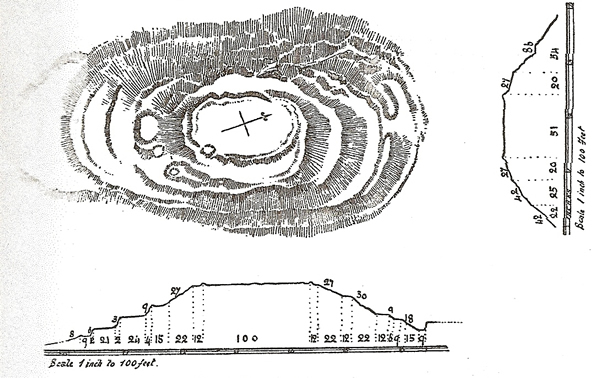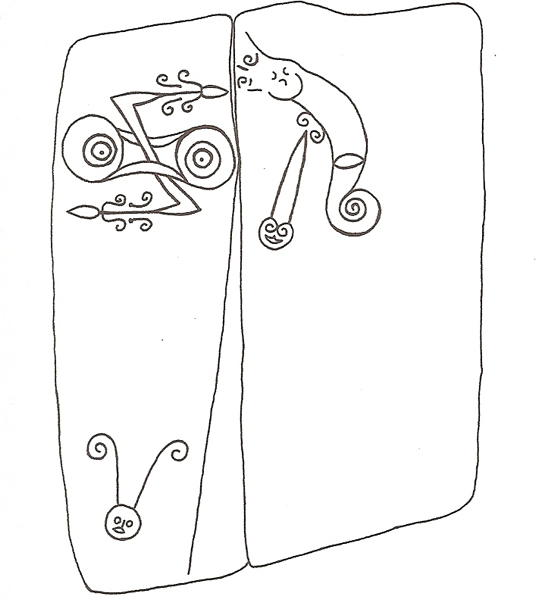In the Anwoth parish account of the Statistical Account of Scotland, written near the end of the 18th century, ‘one of those vitrified forts which have lately excited the curiosity of modern antiquaries’ is mentioned. The local minister, Reverend Gordon, further notes that ‘on the south side of this fort there is a broad flat stone, inscribed with several waving and spiral lines, which exhibit however no regular figure’ and ‘near it likewise were lately found several silver coins; one of King Edward VI; the rest of Queen Elizabeth’.
The carved symbols were first drawn by J Stuart in 1856, who also first recorded that the hill went by the name of Trusty’s Hill. Stuart doubted whether the horned figure at the bottom was anything more than a more recent addition to the other carvings.

Stuart's depiction of the Pictish Symbols at Trusty's Hill (Stuart, J 1856 Sculptured Stones of Scotland. Aberdeen: The Spalding Club). Derived from information compiled by and copyright of RCAHMS
A plan of the site was first made towards the end of the 19th by Frederick Coles, who recorded un-mortared stonework around the summit but noted that according to ‘accurate observers’ the walls were regular and compact, and exhibited vitrification 40 or 50 years previously.

Coles' Plan of Trusty's Hill. (Coles, F 1893 ‘Motes, Forts and Doons of Kirkcudbright’, in Proceedings of the Society of Antiquaries of Scotland 27 (1892-93), 92-182).
Of most interest to Coles were the ‘Dolphin’ and ‘Sceptre and Spectacle Ornament’ carvings; he concurred with Stuart in dismissing the lowest figure as of recent origin. Coles made another couple of notes; that he could not find cup and ring marks said to be near this sculpturing; and that the antiquity of the name, Trusty’s Hill, could be dismissed as the invention of a certain Allan Kowen, who fifty years before had rented a small croft near the foot of the hill and founded the legend about ‘Trusty’.
The Pictish symbols at Trusty’s Hill were included in Allen and Anderson’s survey of Early Christian Monuments in Scotland in 1903, who classified the z-rod and double disc symbol and dolphin symbol as Class I, i.e. belonging to the earliest phase of Pictish Carvings.

